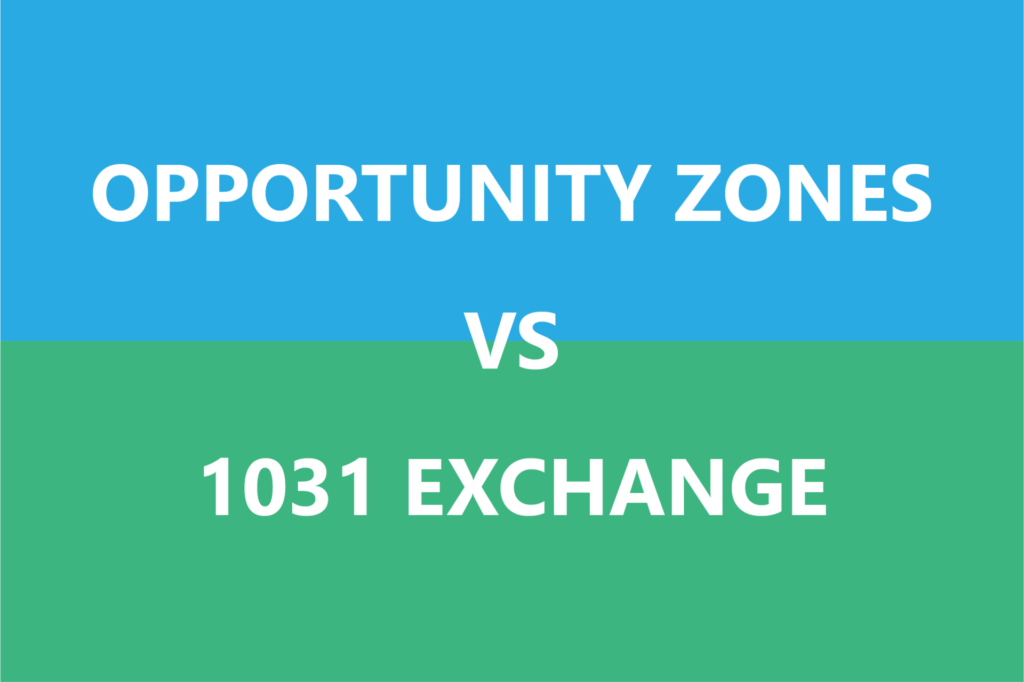An Opportunity Zone is an economically distressed urban or rural community that has been identified by certain local, state, and federal qualifications. Additionally, localities can qualify as Opportunity Zones if they have been previously nominated for the designation by the state. If the localities have been nominated, then they will need to be certified by the Secretary of the U.S. Treasury.
The tax legislation surrounding this relatively new type of tax advantaged program may be a bit confusing. We do know that taxpayers can exclude or postpone taxes on capital gains that come from investing in a qualified Opportunity Zone fund, should the fund be held for at least 10 years. This means that both investors and syndicators can benefit from investing in Opportunity Zones. Finally, there are currently over 8,700 designated Opportunity Zones within the United States.
Opportunity Zones are relatively new! The first set of Opportunity Zones, covering parts of 18 states, were designated on April 9, 2018. Opportunity Zones have now been designated covering parts of all 50 states, the District of Columbia, and five U.S. territories.

The government is providing certain opportunity zone tax benefits that wouldn’t normally be available to real estate investors. Here are the top tax benefits associated with investing in Opportunity Zones:
The first tax benefit that investors can enjoy is a temporary deferral of inclusion in taxable income. This deferral is only applicable for capital gains that are reinvested in an Opportunity Fund. Additionally, the deferred gain must be recognized before the opportunity zone investment expires or before December 31, 2026.
The second tax benefits that investors can enjoy is a step-up in the basis for capital gains that are reinvested in an Opportunity Fund. It is important to note that the basis is increased by 10 percent should the investment in the Opportunity Fund be held by the taxpayer for at least five years. If the investment is held for at least seven years, then the basis will increase by an additional five percent. The step-up basis increase can help investors exclude up to 15 percent of the original gain from taxation.
The third tax benefit that investors can enjoy is a permanent exclusion from taxable income on capital gains from the sale or exchange of an investment in an Opportunity Fund, assuming the initial investment is held for at least 10 years. It’s important to note that this exclusion only applies to gains accrued after an investment has been made in a Qualified Opportunity Zone.
Did you know that U.S. investors currently hold $2.3 trillion in unrealized capital gains? These unrealized capital gains represent an untapped resource for further economic development and investment possibilities. Opportunity Funds allow investors throughout the United States to use their untapped resources for Opportunity Zone investments. The Opportunity Zone program is designed to incentivize long-term real estate investments via the following stipulations:

For many years, savvy real estate investors have used the 1031 Exchange for its tax efficient benefits. However, Opportunity Zones are strategically designed to reward long term investments by deferring capital gains taxes. Investors are able to defer their unrealized capital gains by reinvesting the monies earned into an Opportunity Fund. The investors are then taxed on only 85 percent of the original investment, as well as proceeds (if they decide to stay in the fund for up to seven years). If the investment is held for more than 10 years, then the investors are only responsible for paying taxes on the original investment. Holding onto the investment for more than 10 years is often the more cost-effective option.
To further understand the tax benefits of 1031 Exchanges (or like-kind exchanges), it’s important that real estate investors understand the associated rules.
To further understand the differences between Opportunity Zones and 1031 Exchanges, we’ve conducted a side-by-side comparison looking at the following factors: rollover, qualified assets, investment structure, capital gains tax deferral, capital gains tax reduction, and capital gains on final sale.
Rollover: An investor must identify replacement property within 45 days. The investor must reinvest both the principal and capital gains within 180 days of sale. This transaction can only be conducted via a qualified intermediary.
Qualified Assets: The 1031 Exchange can only be completed between like-kind property.
Investment Structure: The 1031 Exchange is typically used for single asset swaps. However, you can exchange one property for more than two properties and vice versa so long as the new properties are like your original property.
Capital Gains Tax Deferral: Capital gains tax payments for the initial investment may be deferred indefinitely. However, if the property is sold, then you will have to pay capital gains taxes.
Capital Gains Tax Reduction: No capital gains reduction is available with the exception of a step up in basis upon death of the property owner.
Capital Gains Tax On Final Sale: An investor will have to pay capital gains tax on the final sale of the property.
Rollover: If an investor wants to qualify for capital gains tax advantages, then they must reinvest capital gains within 180 days of sale. An investor does not have to roll over the entire gain. However, only the rolled over portion will be eligible for tax advantages.
Qualified Assets: Capital gains from sale of stock, real estate, or another type of investment can qualify for an Opportunity Fund.
Investment Structure: A pooled fund that invests in multiple assets can be used to invest in an Opportunity Fund.
Capital Gains Tax Deferral: Tax payment on capital gains of the initial investment may be deferred until April 2027.
Capital Gains Tax Reduction: Capital gains tax on the initial investment is reduced by 10 percent after 5 years. It is further reduced by another 5 percent after 7 years through a step up in basis. In summation, a 15 percent reduction is possible so long as the investor invests by December 31, 2019.
Capital Gains Tax On Final Sale: If the investment is held for at least 10 years, then upon the sale of the investment, the investor shouldn’t expect to owe any capital gains tax on any appreciation of the initial Opportunity Fund investment.
How do you decide which option is right for you and your investment strategy? Answering this question is easier with the help of a trusted investment advisor, CPA, or financial consultant. However, to help you get started, consider following a few guidelines:
Real estate can offer many unique benefits, including tax advantages. Working with a real estate expert can help you determine the type of real estate assets, and tax-deferred vehicle you should use to maximize your investment opportunities.
Are you interested in investing in an Opportunity Zone? If so, consider investing in a Qualified Opportunity Zone Fund. Keep in mind, Qualified Opportunity Zones will remain effective through December 21, 2028.
A Qualified Opportunity Fund is a U.S. partnership or corporation that will invest at least 90 percent of its holdings in one or more Qualified Opportunity Zones. There are three types of investments that can qualify:
Real estate investments offered under Opportunity Funds can provide new advantages that are not available in most other real estate investments. Remember, there are certain requirements and certifications that Qualified Opportunity Funds must meet. Some of these requirements and certifications include:
Despite the many benefits that Opportunity Funds offer to investors, there are always risks associated. The key to mitigating associated risks is to remain diversified, while still taking advantage of the capital gains tax relief available through the program. On the other hand, if investors stay diversified, then there might not be enough funds flowing into these vehicles.
Corporations or financiers interested in investing in an Opportunity Fund should consider if the program’s new developments and investments in local businesses will spark revitalization in a low-income community. This will help determine if investors may reap a windfall. Additionally a single investor will likely not have enough capital gains to make an Opportunity Zone project work. Pooling funds from multiple investors may be necessary, which may create additional issues of governance and possible challenges for investors.
The Tax Cuts and Jobs Act created Opportunity Zones on December 22, 2017.
The short answer is “no.” The first set of Opportunity Zones were designated on April 9, 2018. To date, Opportunity Zones have since been designated to cover areas within all 50 states, the District of Columbia, and five U.S. territories.
At their core, Opportunity Zones are an economic development tool. They are strategically designed to spur both economic development and job creation in distressed urban and rural communities throughout the country.
A Qualified Opportunity Fund is an investment vehicle. It is setup to be a partnership or corporation, and used to invest in eligible property that is located within a Qualified Opportunity Zone.
The short answer is “no.” To enjoy the tax benefits, you need to invest a recognized gain in a Qualified Opportunity Fund. Next, you will need to elect to defer the tax on that gain.
The list of designated Qualified Opportunity Zones in which a Fund may invest can be found at Notice 2018-48.
Source: https://www.realwealthnetwork.com/learn/what-is-an-opportunity-zone-tax-benefits/
For more information on Opportunity Zones, please visit: https://www.irs.gov/newsroom/opportunity-zones-frequently-asked-questions